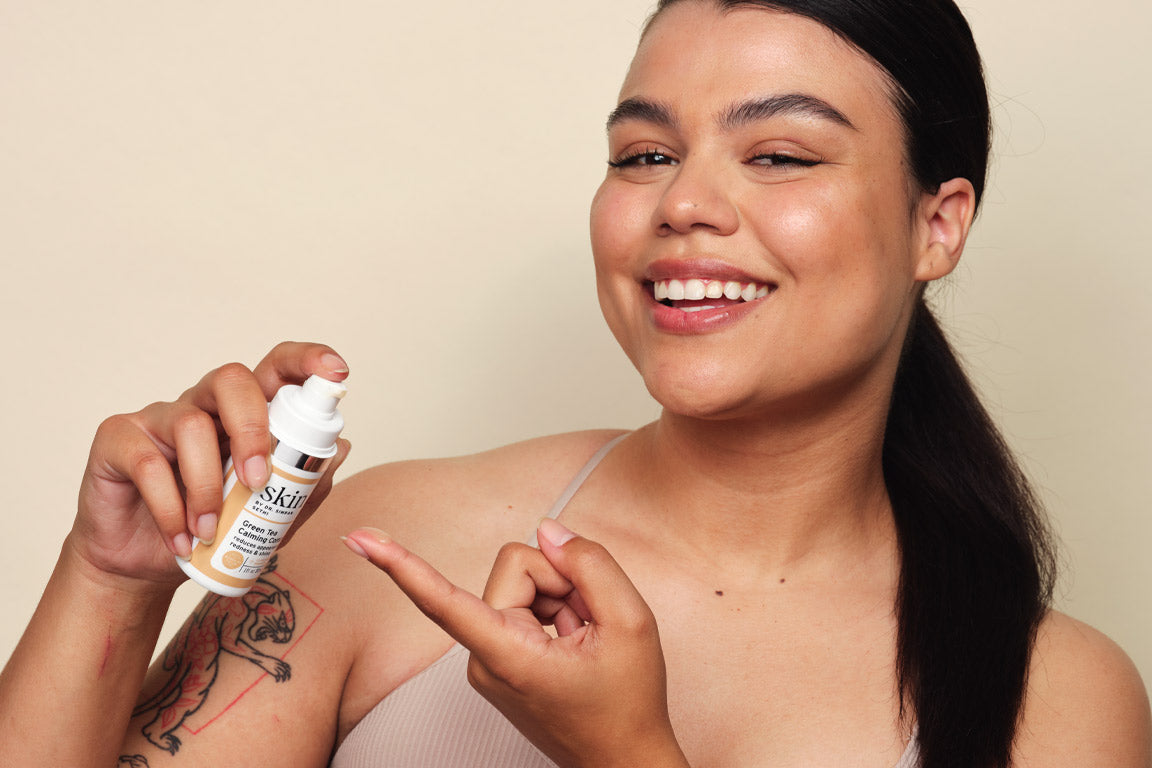You may not realize this, but exfoliation is a process that takes place on and within your skin every day. As a part of your skin renewal cycle, your body is continuously shedding old skin cell layers from its outermost surface to make way for newer skin. As we age, and as we are exposed to different environmental factors, our skin needs an extra boost in exfoliation to continue making new, healthy, and radiant skin.
On The Skin Report podcast, Dr. Simran Sethi, an Internal Medicine doctor and the Founder and Medical Director of RenewMD medical spas, educates listeners on all things exfoliants – what they are and what they can do for your skin type and tone. The podcast episode covers a LOT of information about exfoliation, so be sure to check it out to gain more useful knowledge!
In this blog post, you will learn about the different exfoliation methods you can apply to your skin to support the skin renewal cycle and gain the full benefits of skin exfoliation.
Why Exfoliate?
If our skin just naturally sloughs off dead skin cells, why should we use additional exfoliation?
Everyone produces new skin at different rates due to factors like age, skin type, and the environment we live in. While we can always benefit from exfoliation, certain skin types and age groups may require more help. Factors like pollution can negatively affect our natural exfoliation process, too, causing it to be inefficient at clearing our skin of dead skin cells.
To support the renewal process, you can use skin exfoliants, which can help clear the skin of dead cells to avoid the buildup of debris, dead skin, clogged pores, and skin inflammation. Removing dry and dead skin cells can boost circulation and promote skin cell turnover, bringing healthier skin cells to the surface and providing a healthy glow. Exfoliants also improve the penetration of our skincare products! So, if you’re applying anything to your skin – such as cleanser, moisturizer, or serums – you also need to be exfoliating so that these products are more effective.
Types of Exfoliants
Physical Exfoliants
Physical (mechanical) exfoliants ‘mechanically’ break down bonds between dead skin cells and debris to buff off the dead layer of skin.
A common physical exfoliation method is to use “scrubs” containing small particles or granules of different sizes to buff away dead skin cells. Microdermabrasion facials and tools like face cleansing brushes are also considered mechanical exfoliation methods.
-
Special Considerations
The size of the particle is an essential factor in achieving healthy and clear skin with mechanical exfoliation, especially for those with melanated skin. Products with large particle sizes can create microtears in the skin that directly irritate the epidermis and stimulate more melanin production, leading to excess pigment production in darker skin tones. It has to be fine enough to not break the skin, and hydrating or moisturizing enough to keep the skin from feeling tight, itchy and breaking. There should not be ‘more pain, more gain’ when we exfoliate!
Overall, mechanical exfoliants are safe and effective when used correctly, however, the properties and ingredients of the type of exfoliator are very important. -
Frequency of Use
Regardless of your skin type or the gentleness of your exfoliation method, you should never use physical exfoliants daily. Otherwise, your skin may become irritated and stripped of essential oils.
In addition, you should avoid physical exfoliants the week before and after receiving a medical-grade skin resurfacing procedure, and microdermabrasion facials should only be carried out once a month.
Chemical Exfoliants
Chemical exfoliants loosen the chemical bonds that help bind dead skin cells together so they can slough or wash off the skin more effectively.
The ingredients used in chemical exfoliant skin care products are usually Alpha Hydroxy Acids (like glycolic or lactic acid) and Beta Hydroxy Acids (like salicylic acid). They break down the enzymes in dead skin cells to help dissolve them.
This exfoliation method can minimize the look of pores, smooth and refine skin texture, brighten skin, and boost skin cell turnover.
-
Special Considerations
When choosing a chemical exfoliant, pay careful attention to the concentration. Chemical exfoliant products can be gentle or strong depending on the percentage of the active ingredients. Stronger exfoliants may be more powerful but can also strip the skin’s natural lipid barrier, especially if used in excess. -
Frequency of Use
Dr. Sethi recommends starting low and slow if you want to begin incorporating chemical exfoliants into your skincare. Begin by using a very low concentration only 1-2 times a week for a good 4 to 6 weeks to allow your skin to adjust to the product and maintain its lipid barrier. This will help you avoid irritation, especially if you have sensitive or dry skin.
When your skin has adjusted to chemical exfoliants, they can be safe to use daily – as long as it’s either a low-strength product and/or paired with a moisture restoring agent.
***
Exfoliants can benefit the skin, but specific exfoliation methods can produce different effects for different skin types and tones. To learn about the best exfoliation methods and considerations for your skin type and tone, tune into Season 1, Episode 14 of The Skin Report Podcast – and follow the series for more information about science-backed skincare!



